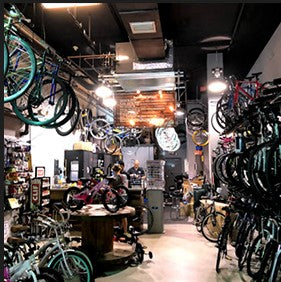Where does fat really go when you exercise? It's not what you might think...
March 16 2018 – Rudy Marquez

Are you trying to get fit by a combination of exercise and starvation? That's a bad plan. People have mistaken ideas about how fat burns, and that makes them think that cutting way back on food while going out on the road is the key. Business Insider explains why they're scientifically wrong.
Exercise doesn't turn fat into energy. The only way to turn matter into energy is with a nuclear reaction, and you wouldn't want that happening in your body. It also doesn't turn fat into muscle. Fat cells are very different from muscle cells, and one can't mutate into the other. Don't feel too bad if you didn't know; a lot of doctors and dietitians get it wrong too.
What is happening, then? It turns out that the expression "burning fat" is pretty literal. When your body needs to draw on its reserves, it converts fat into water, carbon dioxide, and small amounts of other chemicals. It goes out through your lungs, kidneys, and sweat glands. The chemical reaction releases energy to keep you going, so there's a glimmer of truth in the fat-to-energy theory.
Working your muscles hard signals to your body that it needs more muscle. It builds it out of the nutrients you take in. So exercise does decrease fat and build muscle, but not by turning one into the other. If you skimp on nutrition on an extended bike trip, you can't build up your muscles, and more likely than not you'll experience an energy crash before you're done.
So when you pack for the trip, be sure to take along enough food to keep you moving. Keep it balanced, but you can include more carbohydrates than you would while staying at home. Carbs give you quick energy on the road. Make sure to eat before you get very hungry and to drink enough that you don't get thirsty. That way you keep your body's power plant running smoothly, burning fat, building muscle, and giving you enough energy to climb the next hill or ride the next course confidently.

